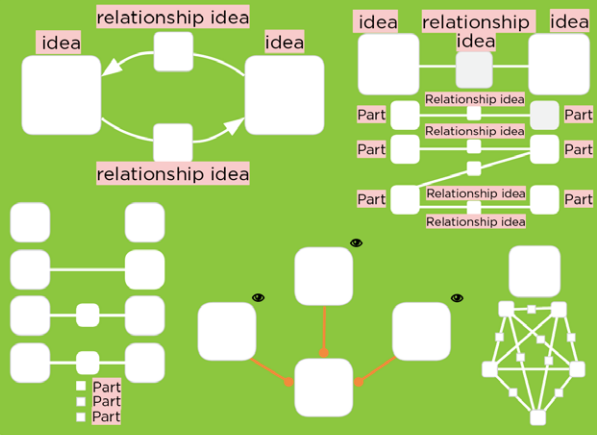A Primer on the Four Simple Rules of Systems Thinking
 Erin Powers
·
3 minute read
Erin Powers
·
3 minute read
Dr. Derek Cabrera has long demonstrated that four simple rules characterize the field of systems thinking and operate across its multitude of approaches and methods. Moreover, he asserts that these rules or patterns underlie human cognition itself. The 4 patterns—distinctions, systems, relationships, and perspectives—go by the acronym DSRP. Drs. Derek and Laura Cabrera have written a book on these rules and their foundational relationship to systems thinking: Systems Thinking Made Simple: New Hope for Solving Wicked Problems.
Because DSRP is integral to the book (although it covers topics from complex adaptive systems to the simple rules of effective, adaptive organizations to how to create better human beings), I want to provide a brief primer on it.
Before I delve into the DSRP patterns, I want to note that each pattern co-implies two elements. I will explain what I mean by this with reference to each rule.
The first pattern is making Distinctions. It is innate for humans to distinguish one thing from another. The two coimplying elements here are “thing/idea” and “other.” You could think of this as identifying your job at work versus what is not your job (perhaps above or below your pay grade). Or you could think of this as an idea like respect, and the other would be not-respect (further making distinctions, you might call not-respect “disdain” or "contempt").
The second pattern in DSRP is Systems, which is eminently suited for taking a systemic view of the world, which seems to be a frequently used descriptor for systems thinking. As systems thinkers, we learn to see systems and to identify parts and wholes (note that part and whole coimply each other). Of course, what is a part of one whole can also be a whole in itself composed of different parts. I may be part of a discussion forum on systems thinking and that forum is a whole, but the forum is also a part of a social media platform such as LinkedIn or Facebook.
Recognizing the parts of systems leads nicely to identifying Relationships, which are characterized by action and reaction (again, one implies the other). To speak in familiar terms, a relationship may be one of cause and effect, or part-whole. To apply the distinctions rule in terms of a social network, your relationship to Sue might be characterized by George, a mutual friend on Facebook. A relationship could be boss-subordinate, mentor-mentee, or other hierarchical type. Much of the complexity and unique properties we see at the group level are attributable to the relationships among the constituent parts. Therefore, to try and understand a system without defining the relationships it entails is near impossible.
Finally--and this is the rule (in combination with distinction-making) I personally find most enriches my thinking when I am being metacognitive (thinking about my thought patterns)--there is the taking of Perspectives. Perspectives entail a point (that which is being focused upon or seen) and a view (that which is doing the seeing or focusing). For example, I frequently edit for people. As an editor I have an opinion (view) on the use of colloquialism (the point), which often differs from that of the author (view).
Perspectives are the well-trodden territory of mental models in systems thinking. Every distinction I make, every system and relationship I identify, is affected by my perspectives. I benefit tremendously when I ask myself what perspective is implicit in my thinking on any given problem or situation. How close an approximation of reality is that perspective? What if it is flat-out wrong? What other possible perspectives could I apply to the situation?
As you can probably tell by the way I presented the rules, they do not operate in isolation. I can’t authentically take a different perspective without first making distinctions. Any system of parts could be organized in different ways--by grouping them differently. I won’t get far trying to understand a part-whole system without delineating the relationships it contains. They are simple rules, but they add up and combine to produce systems of great complexity. Systems thinking frequently operates in the realm of complexity, and DSRP provides amazingly straight-forward, practical tools to approach complex situations and problems.
DSRP has very useful yet also inspirational applications. If you are dealing with complex problems, trying to improve your thinking, working in organizations or in relationship with other people… Well, everyone, I urge you to check out the Cabreras’ new book.



